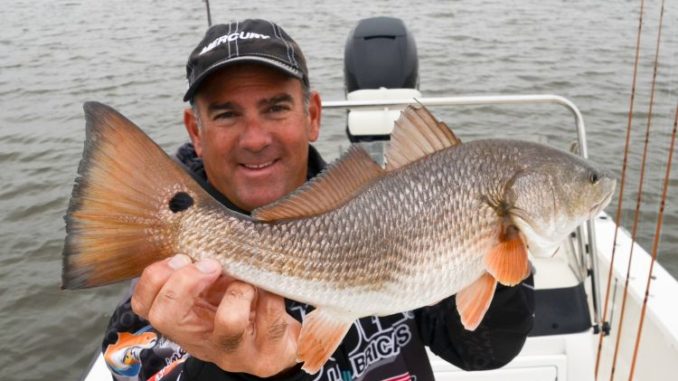
Much of Rue’s fishing this time of year is done on Cameron Prairie National Wildlife Refuge located on the eastern shore of Calcasieu Lake.
The refuge is made up of two units: the 9,621-acre Gibbstown, bisected by Highway 27, and the 14,927-acre East Cove that is accessible only by boat.
The latter is where Rue fishes.
The system is managed as part of the Cameron-Creole Watershed Project, an effort to restore 64,000 acres of coastal marsh by closely managing water flow to achieve a balance between fresh and salt water.
East Cove is isolated from Calcasieu Lake by a 19-mile long levee pierced by five weirs, two of which — Grand Bayou and Lambert Lake — are accessible to the public for fishing.
The weirs’ gates are opened and closed as needed to manipulate salinities.
Access from Big Lake to East Cove is made through the Grand Bayou Boat Bay in the Grand Bayou Weir. The bay’s opening is 10 feet wide, but the vertical opening is limited by the bay’s overhead gate, meaning boats with T-tops cannot access the area.
Rue has to fold down his boat’s console rail and sometimes even remove his wind shield to slip through the bay.
When salinities become very high in the lake, the weirs’ gates are closed, although Rue noted they are usually open most of September, and all of October and November.
Inside the gates on the refuge, a fisherman will find something that looks much different from what a paper or electronic map indicates.
Much of what is shown on maps as land has eroded away and is now open water. Some of it is 4 feet deep, but some of it is 1 foot deep.
“It’s easy to strand a 24-foot bay boat in the shallows,” Rue cautioned. “Be careful until you learn the area.”